
How do You decide within Your Team?
How
do
you
want
to
decide
in
a
team?
This
is
a
crucial
question,
and
a
self-directing
team
that
operates
at
eye
level
needs
a
good
answer.
You
need
a
way
to
come
to
smart
decisions
quickly
and
effectively,
even
though
everyone
has
a
say.
This
problem
is
well
known,
and
over
the
course
of
time
various
approaches
have
emerged,
sometimes
working
better
and
sometimes
worse.
At
some
point,
four
Austrians
developed
Systemic
Consensing
(the
SK
Principle),
which
has
the
power
to
accomplish
a
great
deal.
In
recognition
of
this
great
technique,
we
adopted
it
for
NVC-plus
and
were
able
to
favorably
accentuate
the
method,
based
on
the
advantages
and
possibilities
that
NVC-plus
offers
us.
Thus
we
have
the
answer
how
modern
NVC-plus
teams
can
decide
very
well.
However,
as
with
all
NVC-plus
elements,
each
team
is
free
to
use
consensus
decision-making
or
to
reach
for tools that work better for them.
Consensing (German)


Since this is quite a topic, here is a video about it:

NVC-plus Consensing (German)
Here is a video too, to do justice to the topic:



Classical consensing
(SK Principle, Systemic Consensing)
Consensing
is
about
making
the
best
decision
in
groups,
teams
and
communities,
or
developing
it
further
in the decision-making process.
The
process
begins
with
a
search
for
proposed
solutions.
The
proposal
that
generates
the
least
rejection
in
the
group
wins
-
i.e.
not
the
proposal
with
the
most
YES's,
nor
the
proposal
with
the
fewest
NO's
(YES-NO
duality), but the proposal with the lowest scaled collective NO.
Thus,
for
each
individual
solution,
the
extent
of
the
group's
total
resistance
is
determined.
The
proposal
with the least resistance succeeds.
Advantages
•
Quick decision
•
Involves everyone
•
Creative solution finding
•
Even reserved people can participate well
Procedure
•
How do we proceed?
•
Card
poll,
with
an
app,
a
tool,
anonymous,
who
writes
down,
moderates,
totals?
How
many
rounds
do
people want to vote? (2, 3, 4?)
•
Does
everyone
have
a
good
understanding
of
how
consensus
voting
works?
(Test
run
with
innocuous
question)
1
.
What exactly is the problem
- formulated as a question
This question should not be answerable with yes or no (so do not formulate a decision question!)
2
.
What are the proposed solutions?
As in brainstorming, the proposals are not criticized
3
.
How much resistance does each proposal generate and with whom?
Each
solution
proposal
is
evaluated
by
everyone
with
resistance
points.
Zero
points
=
0
resistance
or
no
problem
with
the
solution.
5
(or
10
if
you
like)
points
=
total
resistance
or
you
don't
support
this
solution.
4
.
Which solution has the least resistance?
You add up the resistance points for each solution and compare the results.
5
.
All can reject, adapt, extend or leave their solution as it is.
They
can
discuss
what
the
resistance
is
based
on
in
order
to
improve
the
proposed
solution
or
to
present
it
more
clearly.
Then
a
second
and
possibly
a
third
round
begins.
In
these
rounds,
the
proposed solutions mature quickly and adapt optimally to the group.



NVC-plus Consensing
For
NVC-plus
consesning,
you
don't
look
for
different
solutions
for
a
problem
to
consense
them,
as
it
is
common
in
classical
consensing.
Instead,
you
define
the
problem
and
consider
what
parameters
all
solutions
would
need
to
meet
in
order
for
the
solution
to
be
a
solution.
For
example,
if
we
are
looking
for
a
restaurant for lunch, then that restaurant would have to:
•
be open at noon
•
be accessible within 10 minutes
•
offer something vegetarian too.
So
the
problem
is
only
seen
as
a
framework
for
different
personal
utopias/visions.
These
are
sought
for
NVC-plus
consensing,
listed
and
then
consensualized
as
usual.
In
the
process,
the
utopias/visions
mature
and partly combine with other utopias/visions.
The
advantage
of
this
is
that
not
only
a
pure
problem
solution
is
created,
but
also
a
positive
vital
current
in
the team.
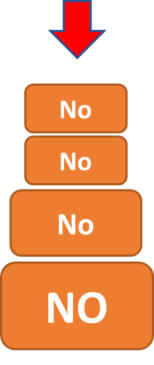

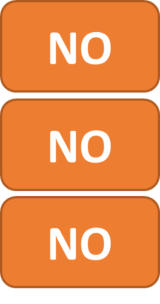
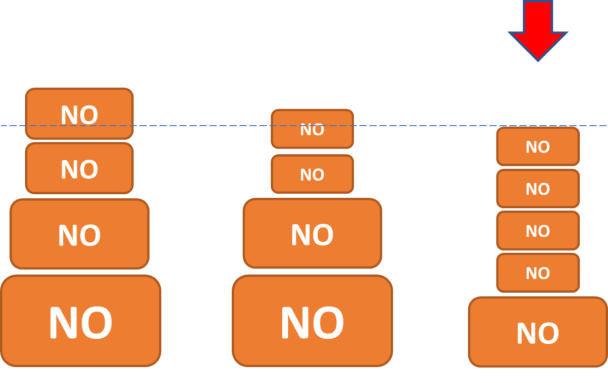
Organising projects with self-organised teams

How do You decide within Your
Team?
How
do
you
want
to
decide
in
a
team?
This
is
a
crucial
question,
and
a
self-directing
team
that
operates
at
eye
level
needs
a
good
answer.
You
need
a
way
to
come
to
smart
decisions
quickly
and
effectively,
even
though
everyone
has
a
say.
This
problem
is
well
known,
and
over
the
course
of
time
various
approaches
have
emerged,
sometimes
working
better
and
sometimes
worse.
At
some
point,
four
Austrians
developed
Systemic
Consensing
(the
SK
Principle),
which
has
the
power
to
accomplish
a
great
deal.
In
recognition
of
this
great
technique,
we
adopted
it
for
NVC-plus
and
were
able
to
favorably
accentuate
the
method,
based
on
the
advantages
and
possibilities
that
NVC-
plus
offers
us.
Thus
we
have
the
answer
how
modern
NVC-plus
teams
can
decide
very
well.
However,
as
with
all
NVC-plus
elements,
each
team
is
free
to
use
consensus
decision-making
or
to
reach
for tools that work better for them.
Consensing
Consensus cards for printing can be found in
the NVC-plus Shop.


NVC-plus Consensing
NVC-plus
Abstimmungskarten
zum
Ausdrucken
bekommst du hier:
Consensing
is
about
making
the
best
decision
in
groups,
teams
and
communities,
or
developing
it
further in the decision-making process.
The
process
begins
with
a
search
for
proposed
solutions.
The
proposal
that
generates
the
least
rejection
in
the
group
wins
-
i.e.
not
the
proposal
with
the
most
YES's,
nor
the
proposal
with
the
fewest
NO's
(YES-NO
duality),
but
the
proposal
with
the
lowest scaled collective NO.
Thus,
for
each
individual
solution,
the
extent
of
the
group's
total
resistance
is
determined.
The
proposal
with the least resistance succeeds.
Advantages
•
Quick decision
•
Involves everyone
•
Creative solution finding
•
Even reserved people can participate well
Procedure
•
How do we proceed?
•
Card
poll,
with
an
app,
a
tool,
anonymous,
who
writes
down,
moderates,
totals?
How
many
rounds do people want to vote? (2, 3, 4?)
•
Does
everyone
have
a
good
understanding
of
how
consensus
voting
works?
(Test
run
with
innocuous question)
1
.
What
exactly
is
the
problem
-
formulated
as
a question
This
question
should
not
be
answerable
with
yes
or no (so do not formulate a decision question!)
2
.
What are the proposed solutions?
As
in
brainstorming,
the
proposals
are
not
criticized
3
.
How
much
resistance
does
each
proposal
generate and with whom?
Each
solution
proposal
is
evaluated
by
everyone
with
resistance
points.
Zero
points
=
0
resistance
or
no
problem
with
the
solution.
5
(or
10
if
you
like)
points
=
total
resistance
or
you
don't
support this solution.
4
.
Which solution has the least resistance?
You
add
up
the
resistance
points
for
each
solution and compare the results.
5
.
All
can
reject,
adapt,
extend
or
leave
their
solution as it is.
They
can
discuss
what
the
resistance
is
based
on
in
order
to
improve
the
proposed
solution
or
to
present
it
more
clearly.
Then
a
second
and
possibly
a
third
round
begins.
In
these
rounds,
the
proposed
solutions
mature
quickly
and
adapt
optimally to the group.
For
NVC-plus
consesning,
you
don't
look
for
different
solutions
for
a
problem
to
consense
them,
as
it
is
common
in
classical
consensing.
Instead,
you
define
the
problem
and
consider
what
parameters
all
solutions
would
need
to
meet
in
order
for
the
solution
to
be
a
solution.
For
example,
if
we
are
looking
for
a
restaurant
for
lunch,
then
that
restaurant would have to:
•
be open at noon
•
be accessible within 10 minutes
•
offer something vegetarian too.
So
the
problem
is
only
seen
as
a
framework
for
different
personal
utopias/visions.
These
are
sought
for
NVC-plus
consensing,
listed
and
then
consensualized
as
usual.
In
the
process,
the
utopias/visions
mature
and
partly
combine
with
other
utopias/visions.
The
advantage
of
this
is
that
not
only
a
pure
problem
solution
is
created,
but
also
a
positive
vital
current
in
the team.
Classical consensing
(SK principle, systemic consensing)
NVC-plus Consensing
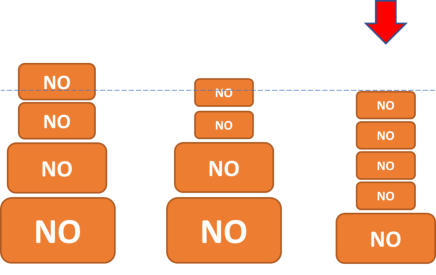
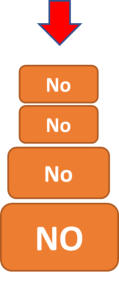




Organising projects with self-organised teams


























